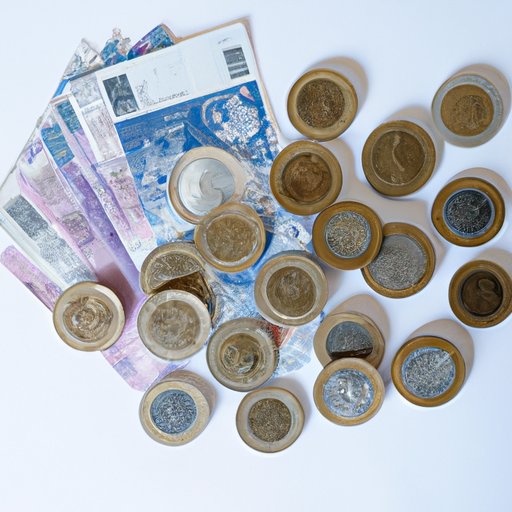
Introduction
Whether you’re a UK resident or a tourist visiting the country, one of the most frequently asked questions is how much money is in a pound. While this might seem like a simple question, the value of a pound can be influenced by several factors, including inflation rates, exchange rates, and the type of currency in circulation. In this article, we’ll provide you with a comprehensive overview of how much money is in a pound and what factors can impact its value.
A Historical Perspective on the Value of Money
The concept of money has evolved over time, from barter systems in early civilizations to the creation of physical coins and bills. The value of a pound has also changed throughout history. From the 12th century, a pound of silver equaled one pound in weight. However, the value of a pound has changed due to various factors such as wars, economic crises, and political changes. In 1971, the UK decimalised its currency, and this led to the creation of a decimal-based system that we continue to use today.
How Much a Pound is Worth in Different Countries
The value of a pound sterling changes daily depending on the exchange rate with other currencies. Different countries have different exchange rates with the pound, and this has a significant impact on the value of a pound. One of the most common comparisons is against the US dollar. As of September 2021, £1 was equivalent to approximately $1.37. Other comparisons include the euro, with £1 being worth roughly €1.17 and the Japanese yen, with £1 being equivalent to about ¥152.
The Impact of Inflation on the Value of Money
Inflation can be defined as the rate at which prices rise, and the purchasing power of a currency decreases over time. High inflation can have a significant impact on the value of a pound. In the UK, the highest inflation rate ever recorded was in September 1975, at 25%, caused by a series of economic shocks. Inflation can lead to uncertainty in the economy, leading to a decrease in the value of a pound.
Understanding Currency Exchange Rates
Exchange rates refer to the value of one currency in comparison to another. They are affected by several factors, including the health of an economy, political stability, and interest rates. For example, if UK interest rates rise, this can make the pound more attractive to foreign investors, leading to an increase in its value. Similarly, if there is a political crisis or uncertainty, this can lead to a decrease in the value of the pound.
A Breakdown of the Coins and Notes that Make up a Pound
The pound operates on a decimal system, with 100 pence making up every pound. The notes in circulation include £5, £10, £20, and £50 denominations. Coins available include the 1p, 2p, 5p, 10p, 20p, 50p, £1, and £2. The most commonly accepted form of payment is card payments or contactless payment, which have significantly decreased the use of physical notes.
Conclusion
In conclusion, the value of a pound can be influenced by a variety of factors, including exchange rates, inflation rates, and political stability. It is important to stay informed and updated about the current state of the UK economy to understand the value of a pound. By understanding the various factors that influence the value of a pound, you can make informed decisions about investments, travel, or even day-to-day purchases.




